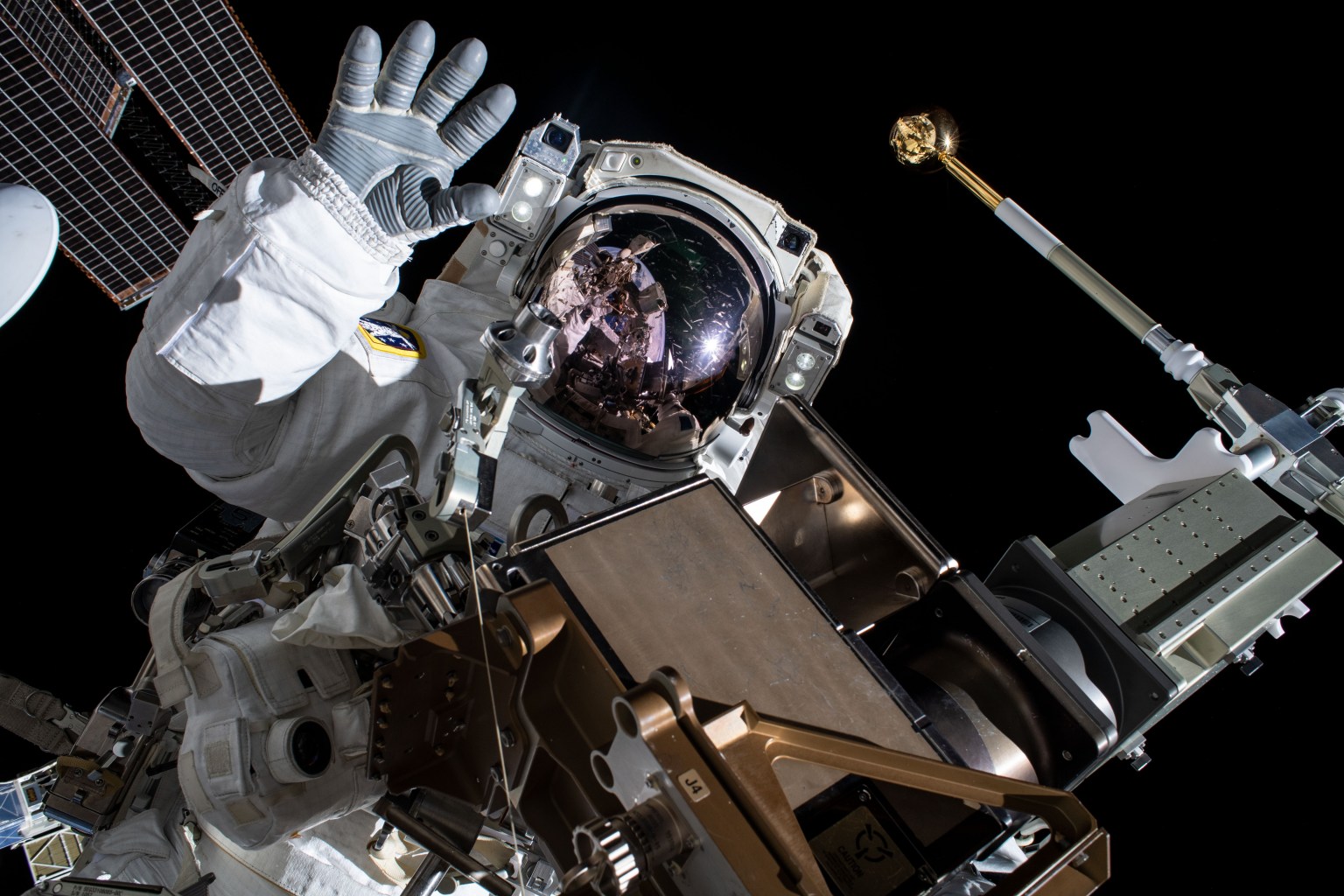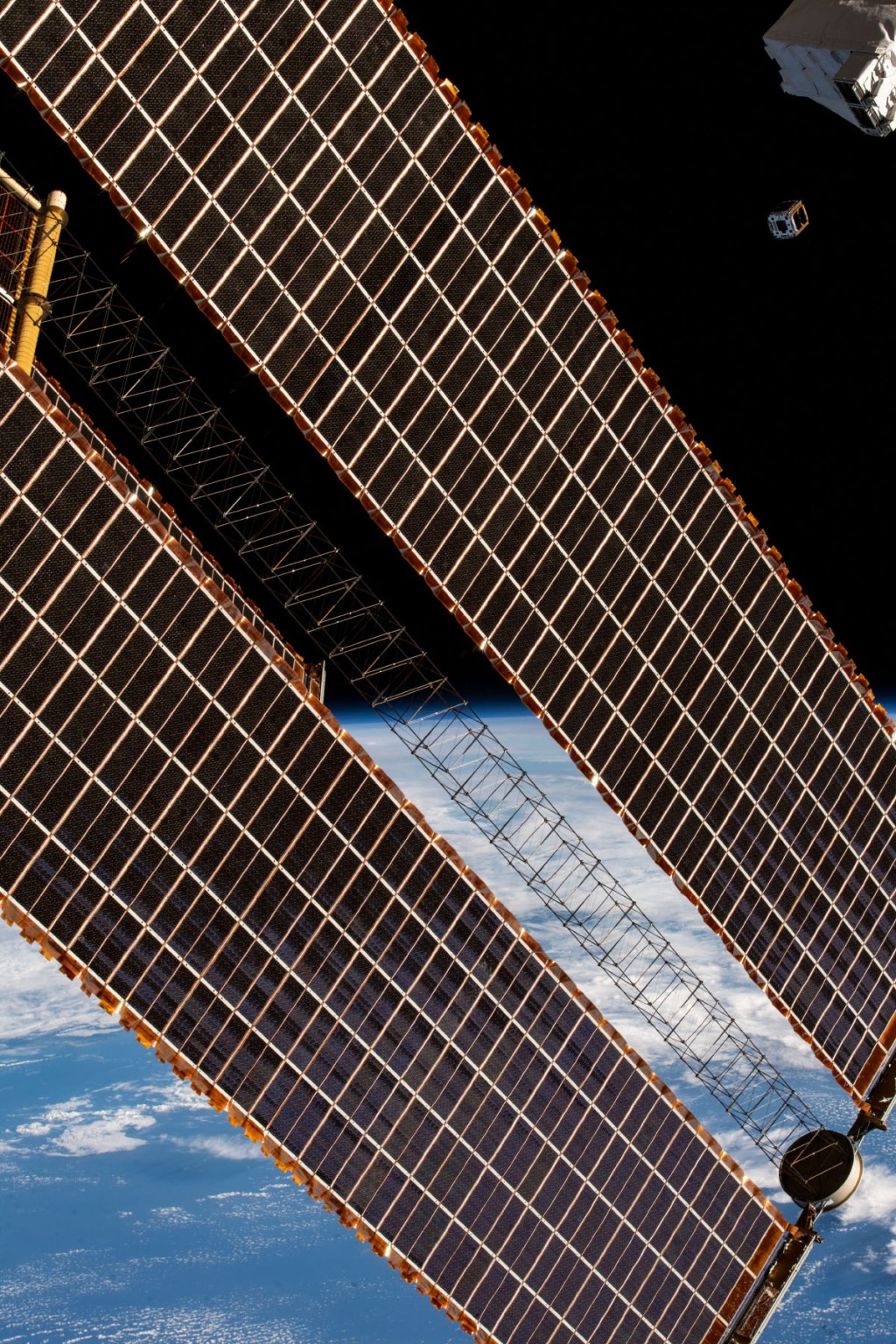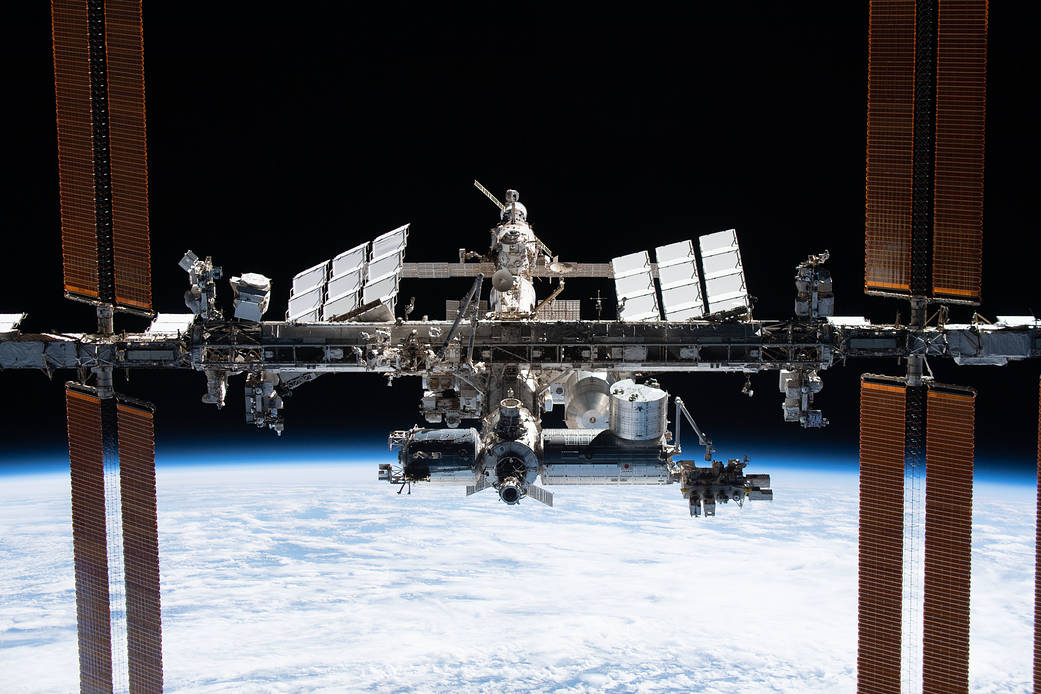Vision Changes on Space Station
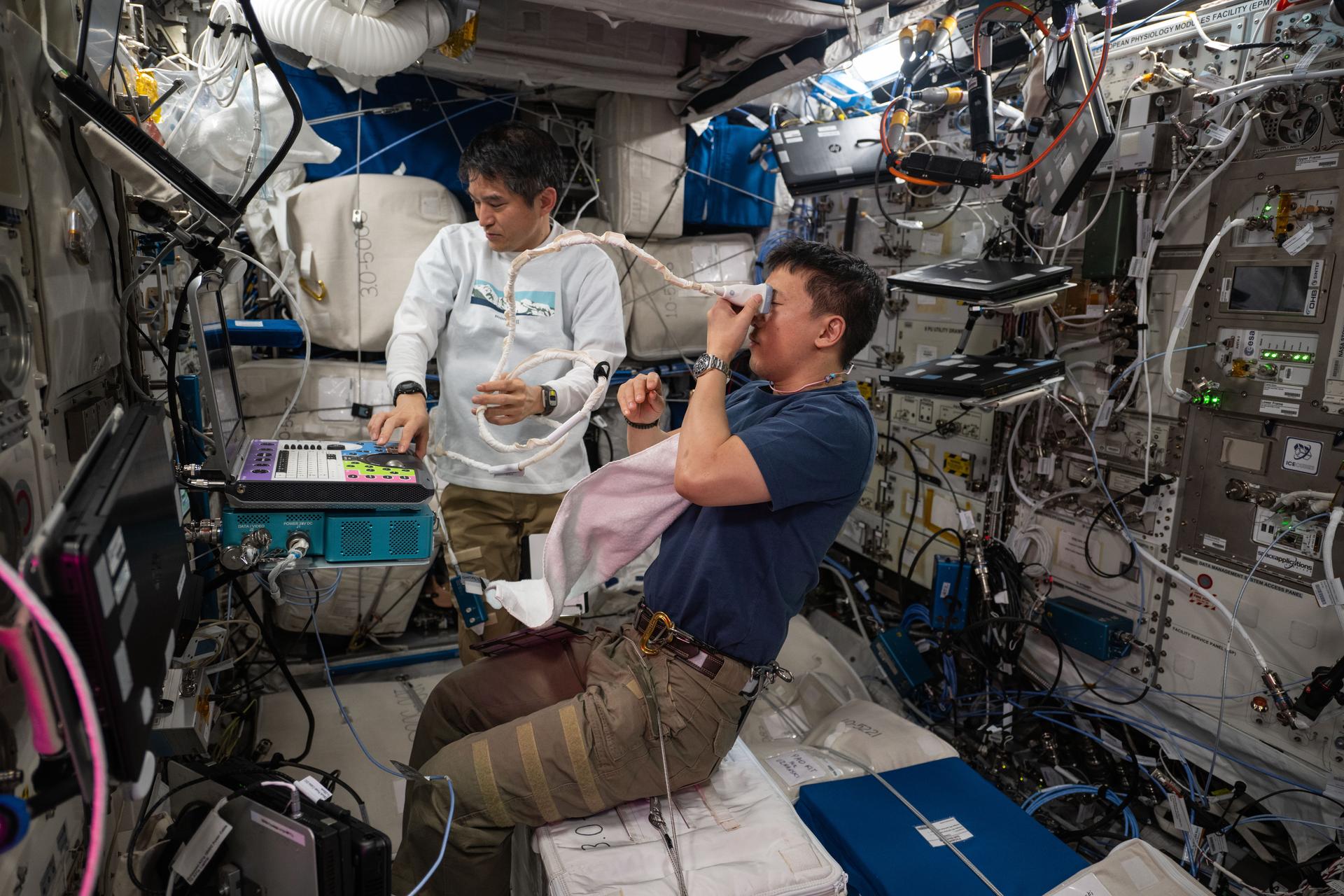
NASA
Science in Space July 2025
When astronauts began spending six months and more aboard the International Space Station, they started to notice changes in their vision. For example, many found that, as their mission progressed, they needed stronger reading glasses. Researchers studying this phenomenon identified swelling in the optic disc, which is where the optic nerve enters the retina, and flattening of the eye shape. These symptoms became known as Space-Associated Neuro-Ocular Syndrome (SANS).
Microgravity causes a person’s blood and cerebrospinal fluid to shift toward the head and studies have suggested that these fluid shifts may be an underlying cause of SANS. A current investigation, Thigh Cuff, examines whether tight leg cuffs change the way fluid moves around inside the body, especially around the eyes and in the heart and blood vessels. If so, the cuffs could serve as a countermeasure against the problems associated with fluid shifts, including SANS. A simple and easy-to-use tool to counter the headward shift of body fluids could help protect astronauts on future missions to the Moon and Mars. The cuffs also could treat conditions on Earth that cause fluid to build up in the head or upper body, such as long-term bed rest and certain diseases.
Following fluid shifts
The Fluid Shifts investigation, conducted from 2015 through 2020, was the first to reveal changes in how blood drains from the brain in microgravity. Vision Impairment and Intracranial Pressure (VIIP) began testing the role those fluid shifts and resulting increased brain fluid pressure might play in the development of SANS. This research used a variety of measures including clinical eye exams with and without dilatation, imaging of the retina and associated blood vessels and nerves, noninvasive imaging to measure the thickness of retinal structures, and magnetic resonance imaging of the eye and optic nerve. In addition, approximately 300 astronauts completed questionnaires to document vision changes during their missions.
In one paper published from the research, scientists described how these imaging techniques have improved the understanding of SANS. The authors summarized emerging research on developing a head-mounted virtual reality display that can conduct multimodal, noninvasive assessment to help diagnose SANS.
Other researchers determined that measuring the optic nerve sheath diameter shows promise as a way to identify and quantify eye and vision changes during spaceflight. The paper also makes recommendations for standardizing imaging tools, measurement techniques, and other aspects of study design.
Another paper reported on an individual astronaut who had more severe than usual changes after a six-month spaceflight and certain factors that may have contributed. Researchers also observed improvement in the individual’s symptoms that may have been due to B vitamin supplementation and lower cabin carbon dioxide levels following departure of some crew members. While a single case does not allow researchers to determine cause and effect, the magnitude of the improvements suggest this individual may be more affected by environmental conditions such as carbon dioxide. This may have been the first attempt to mitigate SANS with inflight B vitamin supplementation.
Eyeball tissue stiffness
SANSORI, a CSA (Canadian Space Agency) investigation, used an imaging technique called Optical Coherence Tomography to examine whether reduced stiffness of eye tissue contributes to SANS. On Earth, changes in stiffness of the tissue around the eyeball have been associated with aging and conditions such as glaucoma and myopia. Researchers found that long-duration spaceflight affected the mechanical properties of eye tissues, which could contribute to the development of SANS. This finding could improve understanding of eye changes during spaceflight and in aging patients on Earth.
Genetic changes, artificial gravity
The MHU-8 investigation from JAXA (Japan Aerospace Exploration Agency), which examined changes in DNA and gene expression in mice after spaceflight, found changes in the optic nerve and retinal tissue. Researchers also found that artificial gravity may reduce these changes and could serve as a countermeasure on future missions.
These and other studies ultimately could help researchers prevent, diagnose, and treat vision impairment in crew members and people on Earth.

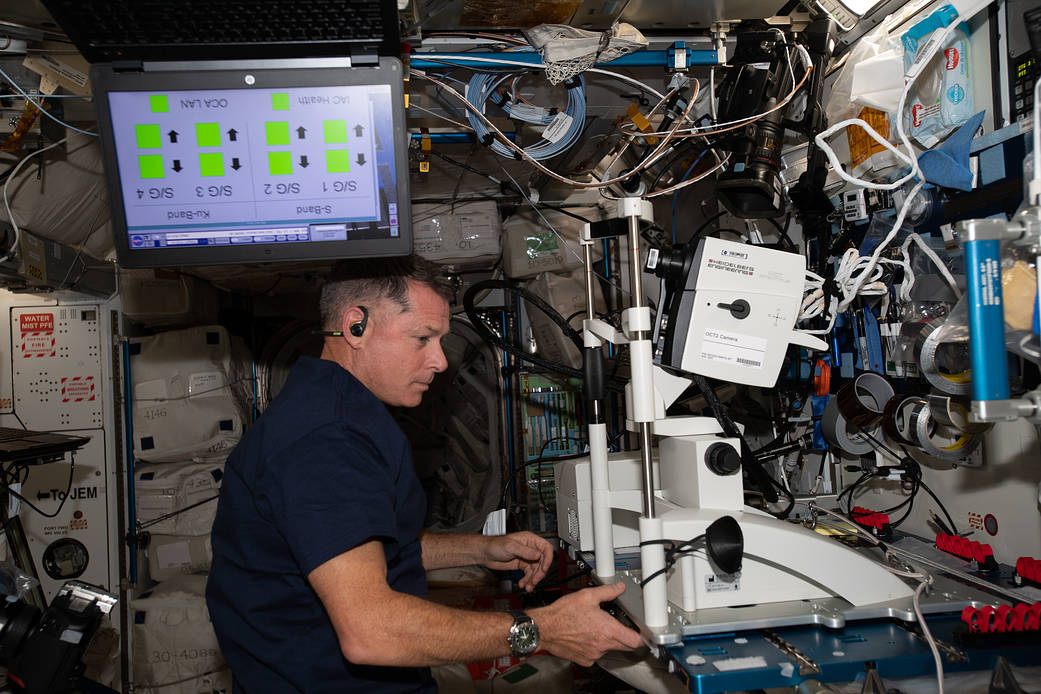
![This image has two parts. The top is an image with three bands of grey across the bottom half with different textures, the bottom two separated by a red dotted line and a yellow line and the middle and top bands separated by a thin white band underscored by a blue line. A green line traces the top edge. The upper half of the image is black. The bottom is a graph with the bottom axis marked “time[s]” and the left axis marked “AU.” Red and blue lines oscillate up and down across the bottom axis. A legend labels the blue line “Chroidal Thickness” and the red line “Oximeter Signal.”](https://www.nasa.gov/wp-content/uploads/2024/09/jsc2022e004236.jpg?w=482)
